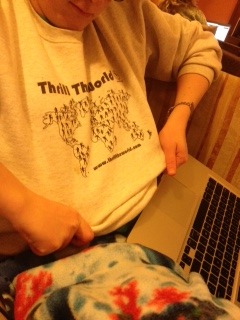Reading Response: How Images Think?
I found Ron Burnett’s How Images Think a little hard to read. For me it was a bit dense and wordy and took me a while to dissect Burnett’s main points, especially through what I found to be somewhat flowery prose.
What caught my eye, however, was this question Burnett poses:
“Does human participation in and acceptance of image-worlds require new definitions of history and a radical re-imagining of what it means to engage with events, both near and far? Are new definitions of place, locality, and community needed? Are images a dramatic move to an oral culture[…]?”
I was really confused by this incredibly dramatic barrage of questions. I’m not sure I understand what Burnett means by this and I’d be interested to see what others think of it, because it makes as little sense to me in context as it would out of context.
It may be because I don’t find images to be as much of a cultural phenomenon that Burnett seems to. We are a visual organism - we have eyes, after all. I think that our growing ability to preserve and share images has led to a greater ability to understand life, whether it be a picture of a kid from a country we’ve never visited or a snapshot of a newly discovered virus from an electron microscope. But by no means do I think that this requires a new definition of history - what would that even be? What does it mean to move to an “oral culture” (and are we not one already, in a sense?)?
I found Burnett’s writing to be wrought with jargon that’s meant only to strike a chord with a certain type of person. I’m picturing a mustachioed, bespectacled Park Slope resident reading this in his restored brownstone while drinking an organic IPA and flipping through Polaroids, but that may be just me.









